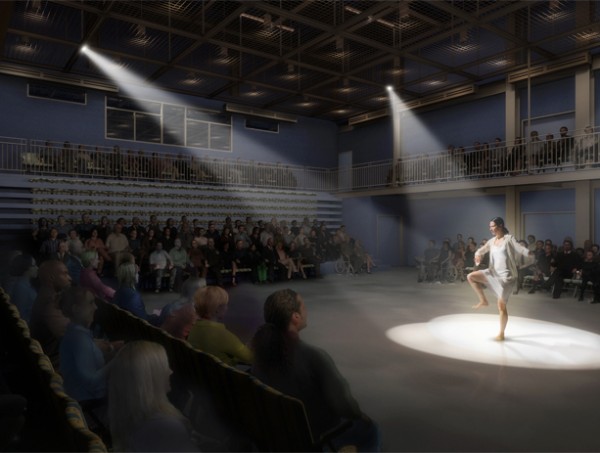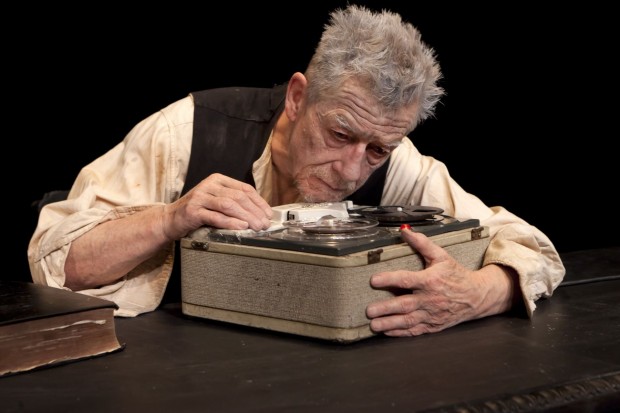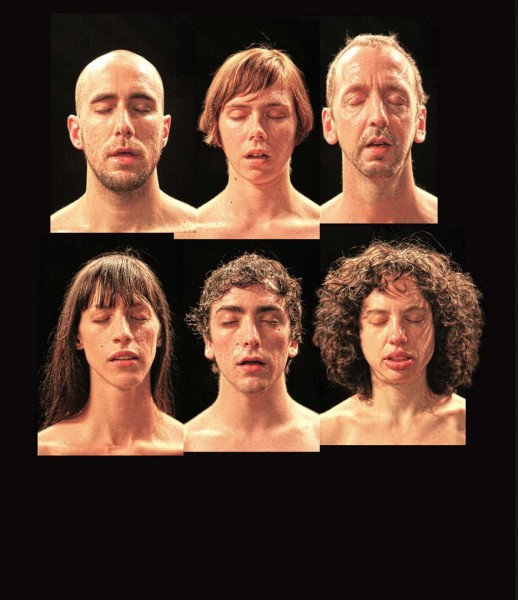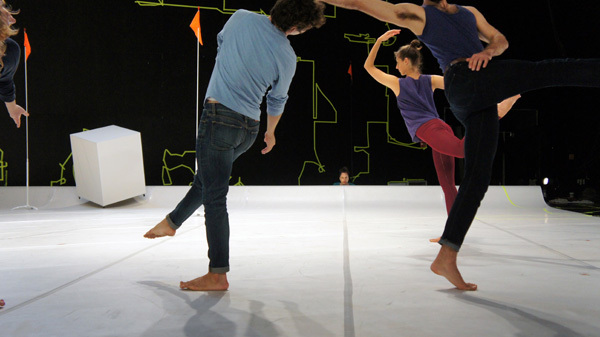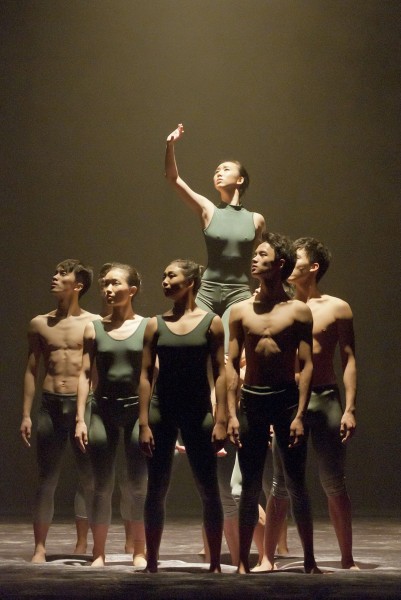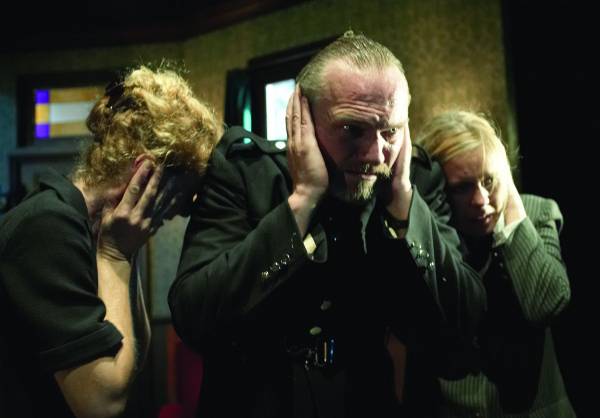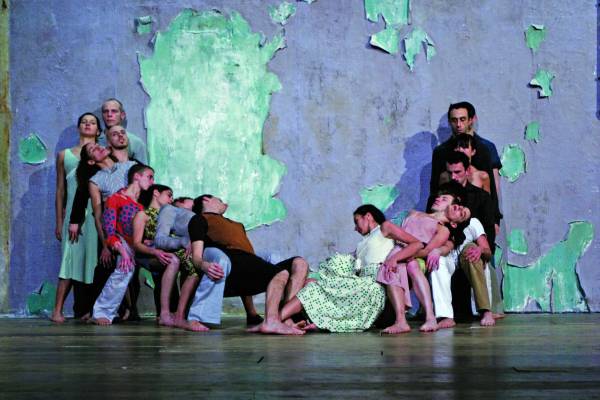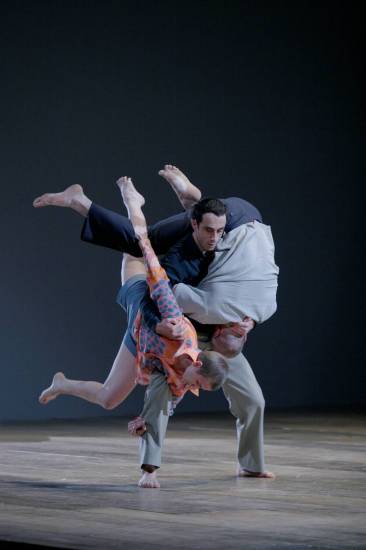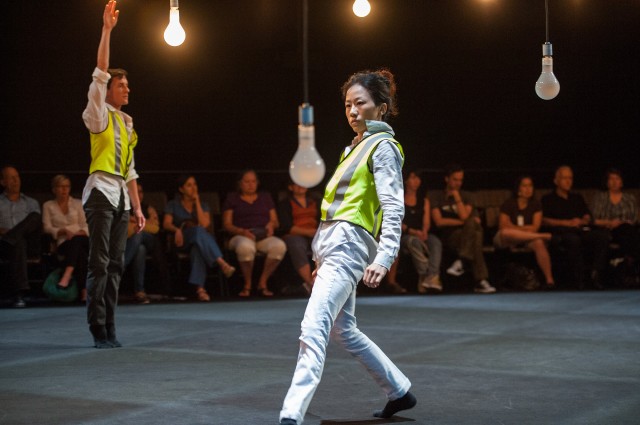
Jonah Bokaer and Anthony McCall present the first production in new BAM black-box space (photo by Stephanie Berger)
BAM Fisher, Fishman Space
321 Ashland Pl.
Through Sunday, September 9, $20
718-636-4100
www.bam.org
BAM has inaugurated its new black-box theater, the 250-seat Fishman Space in the Fisher Building, with the illuminating Eclipse. Part of BAM’s thirtieth Next Wave Festival, the seventy-minute piece is a collaboration between thirty-year-old Ithaca-born choreographer and Chez Bushwick founder Jonah Bokaer and sixty-six-year-old “solid-light” British installation artist Anthony McCall, commissioned by BAM specifically for the Fishman. Performed by Tal Adler-Arieli, Sara Procopio, CC Chang, and Julie Seitel, with Bokaer soloing at the beginning and the end, Eclipse takes place on a soft, dark floor, with the audience sitting two or three rows deep on all four sides, in addition to balcony seats. (All seating is general admission for this show.) Thirty-six lightbulbs hang from the ceiling in diagonal rows and at different heights, going on and off at timed intervals as the dancers move under and around them to the whirr of an old-fashioned movie projector, courtesy of sound designer David Grubbs. Wearing socks, button-down white shirts, and either white or gray cuffed pants — as well as, at times, a vest that is part school crossing guard, part airport ramp agent — the four main dancers walk to the four corners of the stage, stand face-to-face with the audience, and meet at the center, where they perform slow duets and trios. Shadows cast by the lightbulbs and spotlights cast geometric patterns on the floor, particularly triangles at the corners and a square at the center, where much of the more intricate, sculptural choreography occurs. The overall effect is supposed to evoke a live, three-dimensional, four-sided cinematic experience, with close-ups and long shots all in deep focus, but some of those aspects seem to get lost, at least for those audience members seated downstairs. Perhaps the people sitting in the balcony get a better angle of the pathways and changing geography created by the bulbs, supervised by lighting designer Aaron Copp. Still, Eclipse shines a fascinating light on BAM’s new venue, which will feature more experimental productions, with all tickets $20. Also playing the Fishman this month are Nora Chipaumire’s Miriam, Derrick Adams’s The Channel, and Ian and Chad’s Next Wave of Song.
